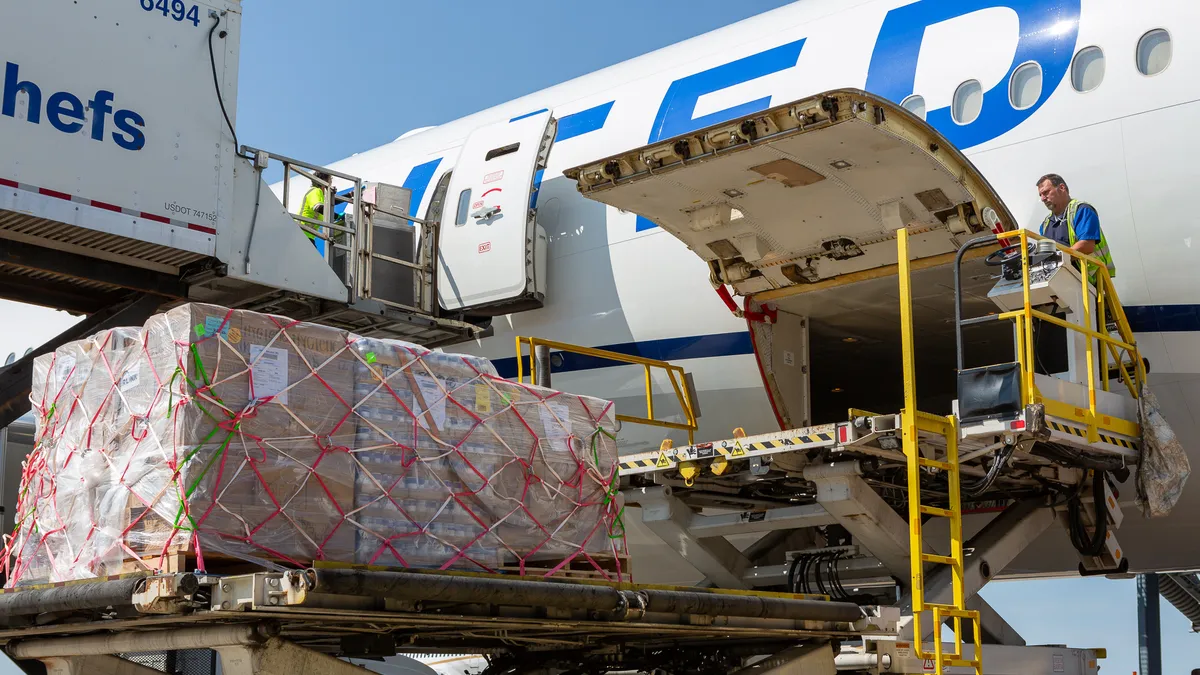Dive Brief:
- Warehouse real estate firm Prologis has achieved carbon neutrality in its primary operations, according to the firm's 2019 ESG impact report released Tuesday.
- The company's direct operations (called scopes one and two in emissions management parlance) include Prologis' offices and long-term leased vehicles — a small minority of the company's total emissions, according to the report.
- Next, the company will tackle a 15% reduction in scope 3 emissions by 2025 compared to a 2016 baseline, with the long-term goal of 40% reduction by 2040. Prologis set these goals in 2018 in accordance with the Science Based Targets initiative (SBTi) standards in 2018.
Dive Insight:
Prologis deployed motion-detecting LED lighting, carbon offsets and renewable energy credits, solar power and wind turbines to reach carbon neutrality in its primary operations. In the report, Prologis committed to expanding LED lighting to 100% of its portfolio by 2025. The company is also looking into low-carbon building materials, noting that energy costs are 45% lower in its LEED-certified buildings.
Now, Prologis is taking on the more challenging task of addressing scope three emissions. This category includes indirect sources of carbon, which Prologis lists as purchased goods and services (a broad category that includes construction), fuel and energy activities, business travel, employee commuting and downstream leased assets.
Prologis organizes customer involvement to encourage participation in sustainability efforts. "Through our Customer Sustainability Advisory Council, we engage with key customers to tie their ESG targets to our business initiatives," Edward Nekritz, Prologis chief legal officer and ESG head, told Supply Chain Dive via email. According to the report, 90% of Prologis' top 25 customers have their own carbon targets.
Based on the figures Prologis offers for these activities, scope three represents roughly 99% of Prologis' total emissions.
Kevin Dooley, a professor of supply chain management at Arizona State University and Chief Research Officer at the Sustainability Consortium, told Supply Chain Dive he's never seen a company's scope three emissions represent less than 80% of the total — most are well above 90%. The largest segment of scope three for Prologis is downstream leased assets, leading Dooley to posit that the energy-use reduction efforts Prologis has made across its other properties should help meet this goal too.
"They should be able to reduce energy consumption in those buildings as easily as they have in their own office buildings," he said.
Prologis is one of 27 real estate firms with approved science-based targets according to the SBTi database. Fellow warehousing player JLL set targets in April, committing to reduce scope one and two emissions 68% by 2034, from a 2018 baseline, and reduce scope 3 emissions "from the use of sold products" 53% per square foot by 2034 from the same base year.
Leasing carbon neutral real estate can help logistics and warehouses managers meet their own emissions reduction goals. Some of the energy efficiency comes from the construction of a building in addition to how the facility is used.














